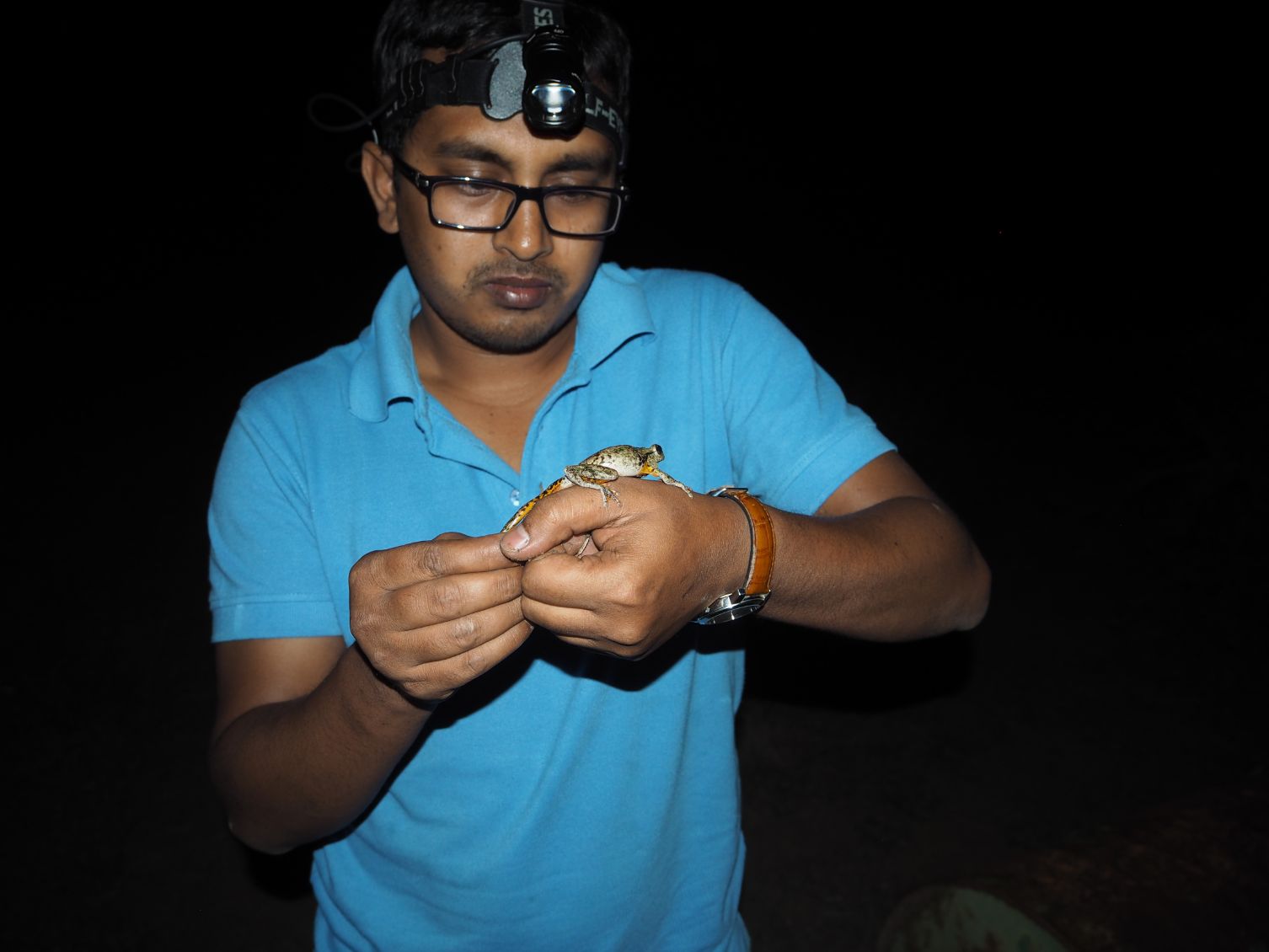A symphony of frogs, recorded by a UNE Masters student, could provide an informative soundtrack to future water management in the Gwydir River catchment.
In the midst of the 2019-20 drought, higher degree research student Razzaq Sarker installed recording equipment at six sites on the Gwydir floodplain wetlands near Moree to tune in to how frogs responded before (when it was dry) and after the arrival of river flows, including environmental water releases.
The study is part of a much larger UNE collaboration with the Aquatic Ecology Laboratory and 2rog Consulting, supported by the Commonwealth Environmental Water Organisation, NSW Government and Department of Primary Industries that is monitoring the impact of environmental releases on a variety of species.
Listen in to 'FrogFM' here.
Frogs are very sensitive and depend on water to survive, breeding and raising their young in shallow pools. While not all frog species breed year-round, rainfall or influxes of water typically strike up a chorus of males eager to capitalise on the conditions, find a mate and reproduce.
"Environmental water is delivered at a specific date and time," Razzaq said. "I wanted to use the frog recordings as a way of understanding how they behaved when it was dry and wet, to determine the impact of environmental flows."
During two water releases into the Gwydir catchment in November 2019 and February 2020, Razzaq found that not all frog species responded in the same way. While inundation did drive frenzied breeding among many species on the floodplain wetlands, chorusing varied across sites and species.
I wanted to use the frog recordings as a way of understanding how they behaved when it was dry and wet, to determine the impact of environmental flows.
For instance, among the nine species Razzaq detected in overnight recordings for periods of 14 hours, the chorusing of the Spotted Marsh Frog (Limnodynastes tasmaniensis) significantly increased and Barking Marsh Frog (Limnodynastes fletcheri) calls significantly decreased after inundation. The Striped Burrowing Frog (Cyclorana alboguttata) was only detected before flow, and three species - the Rough Frog (Cyclorana verrucosa), Knife-footed Frog (Cyclorana cultripes) and Salmon-striped Frog (Limnodynastes salmini) - were only detected after the water came through.
Recordings provide insight
It confirmed that environmental releases into the system undoubtedly help initiate frog reproduction, but also that requirements for breeding can be species-specific.
"Some frogs called when it was dry or there was a small amount of water, and stopped calling when there was too much water," Razzaq said. "The depth of the water also seems important to them, and some seemed to move from deeper to shallower water."
The acoustic study relied on the fact that each frog call has its own frequency. This allowed Razzaq to identify the species responsible and to use computer software to measure the length of their calls amid the cacophony of nocturnal sounds. Some frogs chorused for just a few minutes, while others remained vocal throughout the night, depending on their courtship rituals and success.
"You end up with a spectrogram (false colour spectrogram) that isolates each call as a different colour and shows how long the frog called that particular night," Razzaq said. "Capturing this acoustic communication helps us to understand the environment, and how the frogs are living and responding to water, which has rarely been investigated."
Tuning in to the frogs residing in the floodplains could prove very informative.
Frogs are a very important part of the food web in these floodplains. If they were to vanish, it might be a problem for the many snakes and waterbirds that feed on them. A whole ecosystem might collapse.
"Understanding how frogs respond to water may help guide water managers on how much water we need to deliver through the system and when," Razzaq said. "Frogs are a very important part of the food web in these floodplains. If they were to vanish, it might be a problem for the many snakes and waterbirds that feed on them. A whole ecosystem might collapse.
"We need to install more recorders and do more research on other parts of the river system to gather more information about frog acoustic behaviour and requirements.
"Without adequate water, frogs cannot maintain and expand their populations, so I hope my work contributes to decision-making on the timing of environmental flows and the future prioritisation of water delivery to help save frogs."
Razzaq began studying frogs during his undergraduate studies in Bangladesh and has had to become familiar with the unique Australian frog choir as part of this, his second Masters. When COVID-19 delayed some of his vital field work in 2020, UNE granted him an extension to complete the study.


